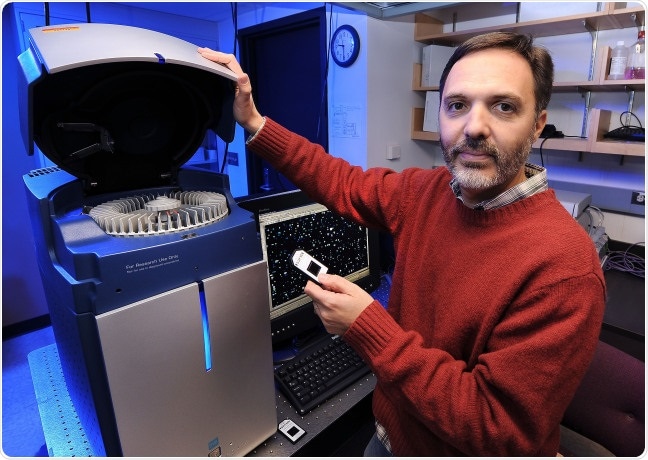The sustained development of plant sciences is highly significant. For instance, the food supply can be considered in this case. Population growth and climate change will continue to pose problems in the days to come, and crop production will need plant scientists to innovate and make progress to keep pace.

Gustavo MacIntosh’s research at Iowa State focuses on plant cellular functions and soybean pest resistance. He took part in a multi-institutional effort to guide outreach efforts in the plant sciences. Image Credit: Robert Elbert.
It is not an exaggeration to say that global populations will go hungry if there is a stagnation in plant science, stated Gustavo MacIntosh, a professor in Iowa State University’s Roy J. Carver Department of Biochemistry, Biophysics, and Molecular Biology.
At the end of the day, either you eat plants or you eat food that ate plants. Plants are the basis for the food we have.”
Gustavo MacIntosh, Professor, Roy J. Carver Department of Biochemistry, Biophysics and Molecular Biology, Iowa State University
According to MacIntosh, plant science will play an increasingly crucial role in society but added that many individuals do not understand plants, in terms of their biology and their important role in the functioning of human society. MacIntosh is concerned that plant scientists are not doing enough research works to increase public awareness of the discipline, which could hinder the progress in the days to come.
So, over the course of more than two years, MacIntosh collaborated with about 30 other scientists to create a detailed guide to help plant scientists share their work with the rest of the world. This guide is a 28-page white paper recently published in the academic journal Plant Direct.
The new guide identifies barriers to communicating the significance of plant science to a broad audience and offers several methods to help plant scientists in spreading the word. Throughout the text, the guide highlights the importance of diversity, providing educators and scientists with a road map for bringing plant sciences to a broad range of audiences.
We want people to be convinced that we need more outreach efforts, and we want this guide to make sure those outreach efforts are effective.”
Gustavo MacIntosh, Professor, Roy J. Carver Department of Biochemistry, Biophysics and Molecular Biology, Iowa State University
The guide was the culmination of a National Science Foundation-funded symposium and workshop held in November 2018 in Davis, California. Over the course of three days, plant scientists worked together to develop a new strategy for science outreach in their field.
These scientists formed groups and devised a strategy to create a document that would serve as a path map for the days to come. The effort results in a document that includes case studies and several methods to share important significant plant science topics with the general public.
The document also includes concepts for classroom activities and tips on how to schedule museum booths and displays at farmers’ markets and other analogous events. It also emphasizes the significance of humanizing plant science to make it available to a broad range of audiences. According to MacIntosh, scientists and nonscientists appear to be growing farther apart for a variety of reasons but added that everyone gains as more diverse voices join the discussion.
As such, MacIntosh headed efforts to make diversity and inclusion central tenets of the latest outreach guide. He believes that removing historical obstacles related to gender and ethnicity will benefit the plant sciences. The white paper also urges for increased participation from early-career scientists and undergraduates, as well as a more diverse combination of public and private sector collaboration.
Good outreach is diverse outreach, in every sense.”
Gustavo MacIntosh, Professor, Roy J. Carver Department of Biochemistry, Biophysics and Molecular Biology, Iowa State University
According to MacIntosh, the lack of fundamental plant science literacy could have a significant impact in the days to come. He cited studies demonstrating that the number of students pursuing doctorates in plant-related disciplines is not increasing quickly enough to keep pace with the job trends in agriculture and plant-related sectors in recent years.
MacIntosh’s own study targets plant cellular functions and how soybeans withstand insect pests. He explained that his participation in the outreach guide is related to his soybean study, which often necessitates extension and outreach efforts to bring scientific advances into the farmers’ hands.
The land-grant model at the core of Iowa State’s mission, which emphasizes the significance of teaching and outreach in addition to studies, stems from the same motivations that resulted in the new white paper, he concluded.
Source:
Journal reference:
Friesner, J., et al. (2021) Broadening the impact of plant science through innovative, integrative, and inclusive outreach. Plant Direct. doi.org/10.1002/pld3.316.